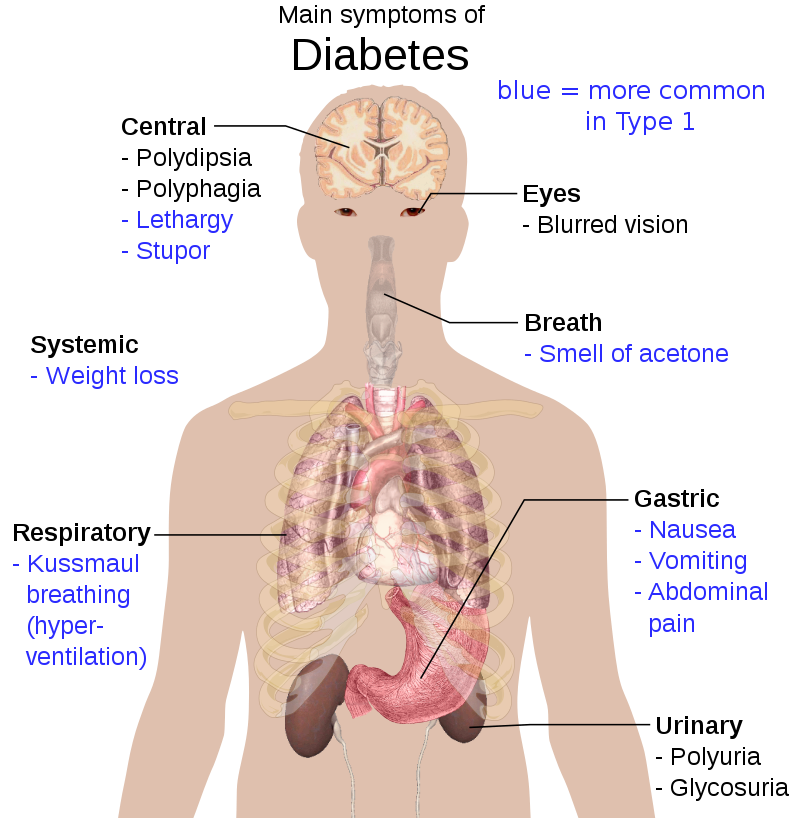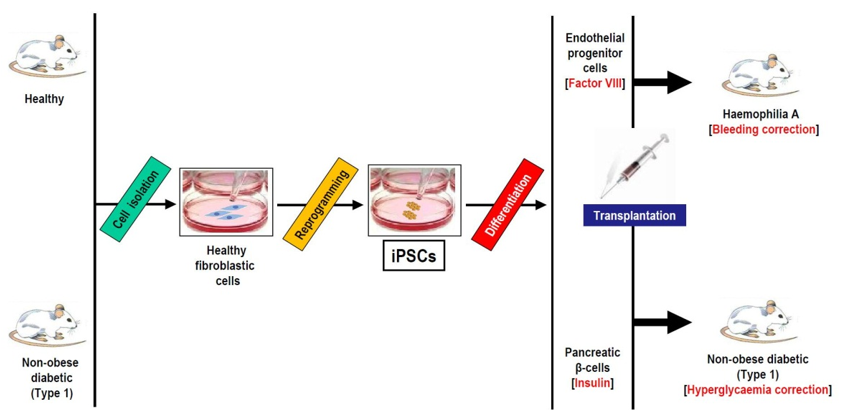Brief Introduction of Diabetes
Diabetes mellitus, also known as diabetes, is a group of complex metabolic diseases that is characterized by high blood glucose, affecting more than 300 million people worldwide. Blood glucose is your main source of energy. It comes from the food you take in. When you eat food, blood glucose will rise. Insulin is a hormone secreted by the pancreas that promotes the conversion of blood sugar into energy. Patients with diabetes don't produce enough insulin or can't effectively use the insulin, thus making the concentration of blood glucose at high levels. Here introduce several common types of diabetes.
 Fig.1 Overview of the most significant symptoms of diabetes.1
Fig.1 Overview of the most significant symptoms of diabetes.1
T1D, previously known as insulin-dependent, juvenile or childhood-onset diabetes, is considered as an autoimmune disease. It occurs when your immune system attacks cells in your pancreas that produce insulin. This disease is characterized by deficient insulin production in the pancreas. Patients with T1D require daily administration of insulin.
T2D, previously known as adult-onset diabetes, is a progressive disease. It occurs when the body becomes resistant to insulin and your body isn't able to effectively utilize insulin to produce energy. T2D is the most common type of diabetes, accounting for 90% of cases of diabetes. This disease is characterized by high blood sugar and insulin resistance.
T1D-related iPSCs can be generated from reprogramming adult tail-tip fibroblasts from NOD mice which are used to study the pathophysiology of T1D. These iPSCs exhibited typical mouse embryonic stem cell features that can be maintained and propagated under normal ESC culture conditions. They can be used to produce genetically altered cell lines, differentiated cells, and chimeric mice. NOD-derived iPSCs are effective platforms for studying the pathophysiology of T1D and discover novel therapies for T1D treatment.
 Fig.2 Induced pluripotent stem cells application to the treatment of haemophilia and diabetes mellitus.2
Fig.2 Induced pluripotent stem cells application to the treatment of haemophilia and diabetes mellitus.2
Several studies have revealed that mouse and human induced pluripotent stem cells (iPSCs) can be used for modeling diabetes. Lepdb/db mice are frequently utilized as T2D model with the mutation in leptin receptor resulting in hyperphagia, obesity, hyperinsulinemia, and hyperglycemia. A study evaluated the differentiation potential of the iPSCs from Lepdb/db mice. Results showed the markers of pluripotency such as Oct3/4A, Nanog, SSEA1, CDy1, and alkaline phosphatase were expressed in Lepdb/db mice iPSCs and these iPSCs can be differentiated into cells originating from three germ layers in vitro and in vivo. However, the differentiation of db/db cells into endothelial progenitor-like cells expressing CD34 and Tie2 markers was impaired and the iPSC-derived db/db cells reduced angiogenic potential. These results suggested that iPSCs derived from Lepdb/db mice can be used as in vitro models to study the mechanisms responsible for vascular dysfunction on differentiation toward cell types affected by diabetes.
iPSCs produced from reprogramming somatic stem cells through the introduction of certain transcription factors have the pluripotency to differentiate into cells of all three germ layers (endoderm, mesoderm, and ectoderm), thus making them an extremely valuable tool for disease modeling, drug screening, and cell therapy. Creative Biolabs offers a series of high-quality iPSCs services, including iPSC reprogramming, differentiation, and characterization as well as iPSC-based stem cell therapy, to support iPSCs application in Diabetes research.
References
For Research Use Only. Not For Clinical Use.